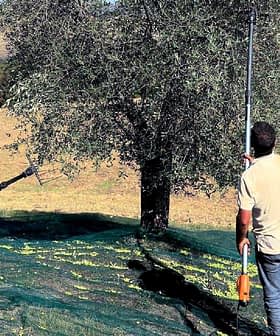Italian food exporters are reporting significant growth in value in all major areas, reaching €34.5 billion.
According to the Institute of Services for the Agricultural and Food Market’s (Ismea) latest report, agri-food exports grew nearly 18 percent in the first seven months of 2022 compared to the previous year.
Despite significant setbacks for farmers across Italy, but especially in the fertile Po Valley, sunflower oil, refined palm oil and extra virgin olive oil exports experienced significant growth in value, along with cereals, milk and wine.
See Also:Rising Prices Expose Untapped Potential for Tunisian ExportsIncreased olive and vegetable oil exports have largely been attributed to sunflower oil shortages sparked by the war in Ukraine.
Ismea said trade figures are also affected by the Euro’s depreciation against the dollar, which makes it cheaper for international buyers to import Italian and European goods.
However, a weaker Euro means agri-food imports also cost more for Italian shoppers. As a result, Ismea estimated that Italy would return to a slight agricultural trade deficit, as imports rose 29 percent to reach €34.9 billion.
“The agri-food trade balance was structurally in deficit… during the decade 2010 to 2019, while in 2021 it hit a €3.4 billion surplus,” Ismea said. “Such a result is due to the agri-food industry, which represents 85 percent of exports and 65 percent of imports.
Similar to the situation in Spain, olive oil exports have helped fuel the rise in exports by value, even as volumes slipped. Additionally, rising olive oil prices across Europe contributed to the increase in export values.
Shipments to the United States grew by 15 percent in value in the first seven months of the year, rising to €232 million. However, extra virgin olive oil volumes exported to the U.S. decreased by 1 percent in the same period.
In the first part of 2023, overall Italian agri-food exports to the U.S. rose nearly 21 percent to €3.3 billion, making the U.S. the second largest market for agri-food exporters after Germany.
Slightly more than 57 percent of all Italian agri-food exports go to, and 69 percent of imports come from other European Union member states.
Overall, Italian extra virgin olive oil exports grew by almost 17 percent to €763 million, with a 0.3 percent increase in volumes exported. However, Ismea noted that declining national production means the value of olive oil imports remains high.
For example, shipments from Spain grew 30 percent in value In the first seven months of 2022, exceeding €556 million. Still, import volumes in the same period dropped 7 percent.









